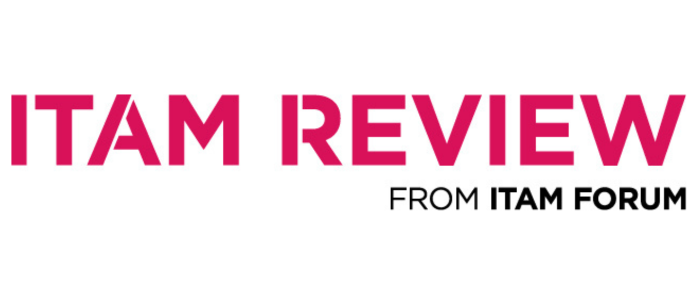The Future of ITAM
As an ITAM Industry Analyst, I’m often asked what ITAM’s future looks like. This can be a tough question to answer because when it comes to the future, there are endless possibilities. Often, it seems, some of the most major advancements in technology appear to come out of nowhere – Chat GPT is a great example of this considering its current prominence and the fact it was only released in 2022. Could anyone have foreseen Chat GPT’s impact on ITAM before its release? The answer is probably “no”; however, we can take what we know to be true right now, combine this with knowledge of past ITAM trends, and piece together the potential future.
How to Predict the Future
To predict the future, we need to begin by first examining how past ITAM trends evolved. Hypothetically, if I were to hop into a time machine and go back to 2010, what would we in ITAM be talking or worrying about? Here’s an overview:
- The upcoming release of Office 365
- Audit readiness
- Software compliance
- Server virtualisation & Licensing challenges
- IT outsourcing
- Device management
Looking at these past trends, we can establish that many of these were driven by technological advancement, and in some cases, the lack of it. In 2010, we saw the release of the iPad and huge growth in the wider tablet market, resulting in challenges around device management. In 2008 the release of Hyper-V created challenges around virtualisation, resulting in a huge focus on licensing virtual environments. The growth in audits, combined with the limitations of technology to provide complete visibility of your estate, further escalated fears around software compliance.
When we look at how ITAM handled these challenges at the time, you’ll notice that in most cases, there was an element of delay…an initial delay in ITAM recognising the impact of new technology…and often, a further delay before ITAM teams acted. Much of this could be blamed on the somewhat limited capabilities of ITAM technologies at the time and lack of integration into wider systems. Regardless of these challenges, every single one of the trends above eventually became a responsibility that largely sits within ITAM.
By using historical examples, we can attempt to draw some general conclusions, apply these to what we see in the industry today, and that might help us understand ITAM’s future.
Current ITAM Trends
ITAM trends we see today largely follow the pattern of historic trends. In most cases, the current trends are a result of new business practices arising from new technologies and increased regulation. Examples of current trends include:
- Cloud asset management & governance
- ITAM & FinOps convergence
- AI & Automation
- Sustainability & Green IT
- Cybersecurity & Compliance
Based on history, we can expect that these will eventually form part of a standard ITAM practice across most organisations. It’s likely that increased collaboration with teams outside of ITAM will be needed to account for the broadening of the ITAM function.
Future ITAM Trends
By reviewing current trends, using historical insights, and considering new technologies growing in popularity, we can make some predictions:
- FinOps & ITAM Convergence: It seems increasingly likely that the worlds of ITAM and FinOps will continue to blend. Research completed by the FinOps Foundation suggests huge increases in collaboration and integration between ITAM and SAM teams. Other research suggests FinOps professionals are spending increasing amounts of time working on SaaS, datacenter and licensing, potentially leading to further integrations with ITAM.
- Containerisation: With its ever-increasing popularity, containerisation is likely to cause some challenges within ITAM. This will revolve around licensing complexity, visibility, and management. Containers bring traditional licensing rules into a dynamic environment, leading to licensing challenges. Tracking the usage and software within containers also creates challenges. ITAM teams will need to ensure they have sufficient tooling to avoid unexpected costs. Not all tools have the functionality to provide container visibility, and those that do, might require costly upgrades or add-ons.
- AI & Automation: There is a high likelihood we’ll see increasing use of AI and automation in ITAM. Many ITAM teams view AI and automation as an opportunity to free up time to focus on more strategic goals. However, there’s still an element of scepticism in this area partly due to failure rates. Some studies suggests less than a third of AI projects reach production stage. Despite this, many tool providers are steaming ahead with plans to implement AI into their products. If successful, we’ll likely see a significant increase in AI and automation incorporated into ITAM.
- Sustainability & GreenOps: This is huge growth area, particularly in Europe. Much of this growth is a result of changes to regulations such as the Corporate Sustainability Reporting Directive (CSRD). As regulations continue to tighten, ITAM will likely see increased focus in this area. The ability to track, reduce, and report on carbon emissions falls within the capabilities of ITAM teams. Therefore, it’s likely that sustainability will become a core ITAM function.
- Cybersecurity: IT asset data is of great importance to cybersecurity teams. The introduction of NIS2, combined with ever-increasing needs to manage vulnerabilities and mitigate risks, will likely increase collaboration between these teams. With guidance from Cybersecurity teams, ITAM teams could utilise existing tools to monitor and track potential concerns.
- ITAM and Business Strategy: Evaluating business technology and aligning it with productivity goals (particularly if we can utilise AI to interrogate the data we hold), will make ITAM a valuable strategic asset.
- Bring your Own Licenses: Bringing your existing on-premise licenses to the cloud can add significant complexity to your environment. This complexity may increase in the future as further changes to BYOL rules could be on the horizon. Microsoft is currently facing a class action lawsuit due to possible overcharging in competitor clouds. If this case is successful, it could result in a relaxation of rules across vendors. This could potentially lead to more competition and a reduction in costs. If unsuccessful, there’s a risk that vendors will continue to further restrict their BYOL rules, leading to price increases.
Conclusion
Much like the ITAM trends of the past, current and future ITAM trends largely result from new technologies changing the way ITAM operates. With Cloud, AI, and SaaS unlocking the potential for incredible business efficiency, ITAM needs to ensure it responds quickly. It also needs to successfully apply guardrails to this new world without becoming ‘red tape’. By embracing change and fostering collaboration, ITAM is poised not just to adapt but to thrive as a critical component of the modern business landscape.
For more information on the future of ITAM, see this white paper, ITAM Evolution: Embracing Necessary Change for a Prosperous Future
Can’t find what you’re looking for?
More from ITAM News & Analysis
-
10 Strategic Lessons for Tackling Compliance, Audits, and Software Licensing Risk in 2025
The ITAM Forum’s 2025 global ITAM research report in partnership with Azul reveals some fascinating insights into the financial, operational, and compliance risks involved in software licensing and audits. This article provides a high-level overview of ... -
Broadcom vs Siemens AG - A Brewing Storm
The ongoing legal battle between VMware (under Broadcom ownership) and Siemens is yet another example of why ITAM goes far beyond license compliance and SAM. What might, at first glance, appear to be a licensing dispute, ... -
Shifting Left Together: Embedding ITAM into FinOps Culture
During one of the keynotes at the FinOps X conference in San Diego, JR Storment, Executive Director of the FinOps Foundation, interviewed a senior executive from Salesforce. They discussed the idea of combining the roles of ...
Podcast
ITAM training
Similar Posts
-
10 Strategic Lessons for Tackling Compliance, Audits, and Software Licensing Risk in 2025
The ITAM Forum’s 2025 global ITAM research report in partnership with Azul reveals some fascinating insights into the financial, operational, and compliance risks involved in software licensing and audits. This article provides a high-level overview of ... -
Broadcom vs Siemens AG - A Brewing Storm
The ongoing legal battle between VMware (under Broadcom ownership) and Siemens is yet another example of why ITAM goes far beyond license compliance and SAM. What might, at first glance, appear to be a licensing dispute, ... -
Shifting Left Together: Embedding ITAM into FinOps Culture
During one of the keynotes at the FinOps X conference in San Diego, JR Storment, Executive Director of the FinOps Foundation, interviewed a senior executive from Salesforce. They discussed the idea of combining the roles of ... -
Addressing the SaaS Data Gap in FinOps FOCUS 2.1
I recently reported on the FinOps Foundation’s inclusion of SaaS and Datacenter in its expanded Cloud+ scope. At that time, I highlighted concerns about getting the myriad SaaS companies to supply FOCUS-compliant billing data. A couple ...




